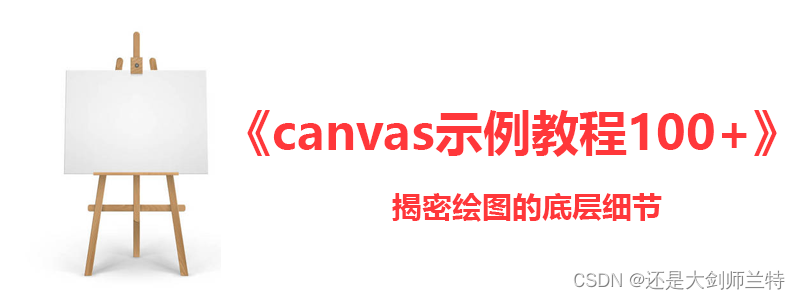canvas绘制网格线示例
发布时间:2024年01月02日

canvas示例教程100+专栏,提供canvas的基础知识,高级动画,相关应用扩展等信息。canvas作为html的一部分,是图像图标地图可视化的一个重要的基础,学好了canvas,在其他的一些应用上将会起到非常重要的帮助。
如何使用canvas绘制网格线呢?方法其实很简单,就是绘制一些等距间隔的横线和竖线,形成一个网格。通常在地图的绘制当中会用到,下面是大剑师的一个示例,供参考:
示例效果图

示例源代码(共109行)
/*
* @Author: 大剑师兰特(xiaozhuanlan),还是大剑师兰特(CSDN)
* @此源代码版权归大剑师兰特所有,可供学习或商业项目中借鉴,未经授权,不得重复地发表到博客、论坛,问答,git等公共空间或网站中。
* @Email: 2909222303@qq.com
* @weixin: gis-dajianshi
* @First published in CSDN
* @First published time: 2024-01-02
*/
<template>
<div class="djs_container">
<div class="top">
<h3>canvas绘制网格线</h3>
<div>大剑师兰特, 还是大剑师兰特,gis-dajianshi</div>
<h4>
<el-button type="primary" size="mini" @click="draw()">绘制</el-button>
</h4>
</div>
<div class="dajianshi ">
<canvas id="dajianshi" ref="mycanvas" width="980" height="490"></canvas>
</div>
</div>
</template>
<script>
export default {
data() {
return {
ctx: null,
canvas: null,
}
},
mounted() {
this.setCanvas()
},
methods: {
setCanvas() {
this.canvas = document.getElementById('dajianshi');
if (!this.canvas.getContext) return;
this.ctx = this.canvas.getContext("2d");
},
draw() {
this.drawGrid(this.ctx, 0, 0, 50, 980, 490, 50, "orange");
},
// 参数说明:
// ctx:画布
// x1:起始x位置
// y1:起始y位置
// step1:横向间隔
// x2:终止x位置
// y2:终止y位置
// step1:竖向间隔
// color:颜色值
drawGrid(ctx, x1, y1, step1, x2, y2, step2, color) {
ctx.save();
ctx.lineWidth = 0.5;
ctx.strokeStyle = color;
ctx.fillStyle = color;
let x, y;
// 画竖线
for (x = x1; x < x2; x += step1) {
ctx.beginPath();
ctx.moveTo(x, y1);
ctx.lineTo(x, y2);
ctx.stroke();
ctx.closePath();
}
// 画横线
for(y=y1;y<y2;y+=step2){
ctx.beginPath();
ctx.moveTo(x1, y);
ctx.lineTo(x2, y);
ctx.stroke();
ctx.closePath();
}
ctx.restore();
}
}
}
</script>
<style scoped>
.djs_container {
width: 1000px;
height: 680px;
margin: 50px auto;
border: 1px solid green;
position: relative;
}
.top {
margin: 0 auto 0px;
padding: 10px 0;
background: #333;
color: #fff;
}
.dajianshi {
margin: 5px auto 0;
border: 1px solid #ccc;
width: 980px;
height: 490px;
background-color: #f9f9f9;
}
</style>
canvas基本属性
canvas基础方法
文章来源:https://blog.csdn.net/cuclife/article/details/135341341
本文来自互联网用户投稿,该文观点仅代表作者本人,不代表本站立场。本站仅提供信息存储空间服务,不拥有所有权,不承担相关法律责任。 如若内容造成侵权/违法违规/事实不符,请联系我的编程经验分享网邮箱:chenni525@qq.com进行投诉反馈,一经查实,立即删除!
本文来自互联网用户投稿,该文观点仅代表作者本人,不代表本站立场。本站仅提供信息存储空间服务,不拥有所有权,不承担相关法律责任。 如若内容造成侵权/违法违规/事实不符,请联系我的编程经验分享网邮箱:chenni525@qq.com进行投诉反馈,一经查实,立即删除!
最新文章
- Python教程
- 深入理解 MySQL 中的 HAVING 关键字和聚合函数
- Qt之QChar编码(1)
- MyBatis入门基础篇
- 用Python脚本实现FFmpeg批量转换
- AP模式1
- 2023年全国职业院校技能大赛信息安全管理与评估赛项正式赛(模块一)GZ032
- 接口测试-Mock测试方法
- 谈谈Mongodb insertMany的一些坑
- 算法练习-螺旋矩阵(思路+流程图+代码)
- 美易官方:黑石股价盘前走低受评级下调影响
- 使用printJS使网页打印成PDF、网页html结合printJS导出为pdf
- 软文发布的规则有哪些?媒介盒子揭秘
- Flask存储在内存中的密钥被读取
- 7-2 sdut-Map-Sort--C~K的班级(III) --笔记篇